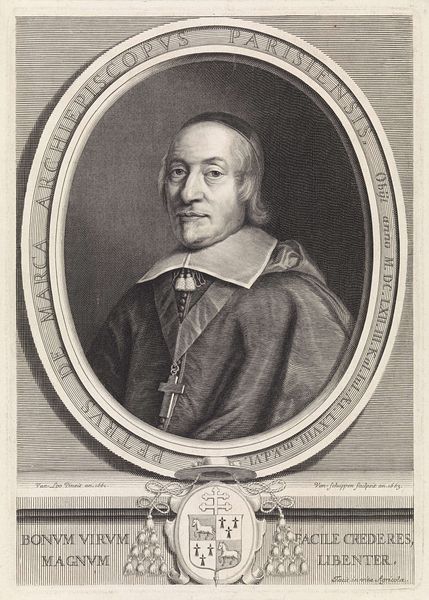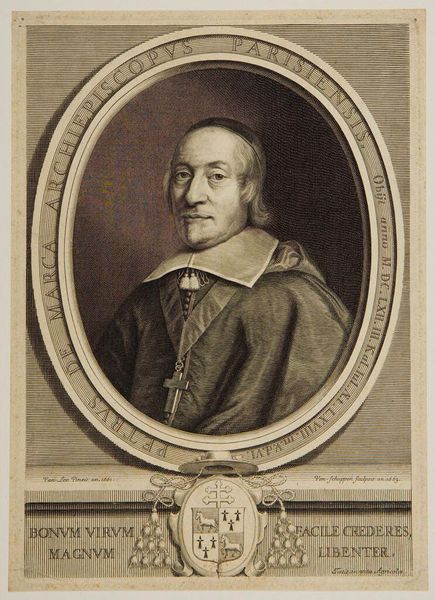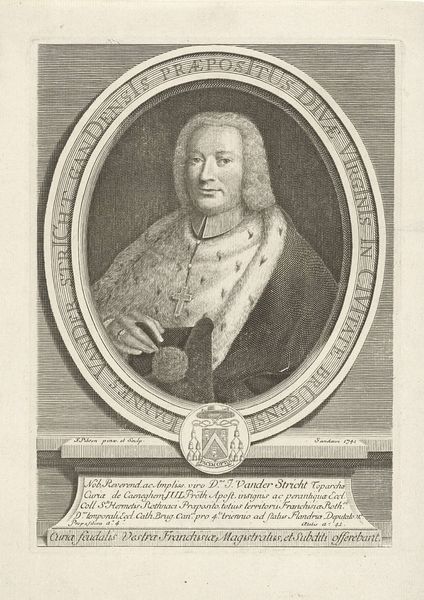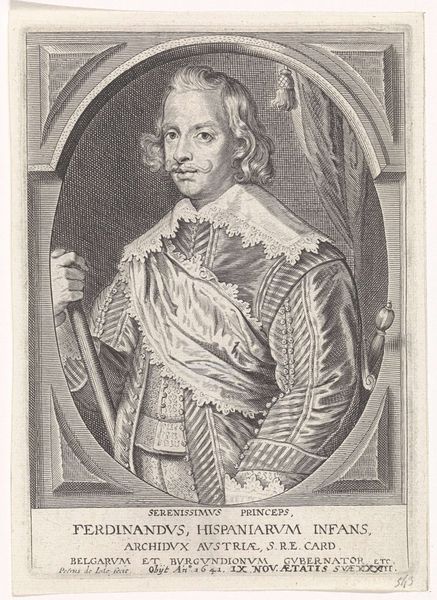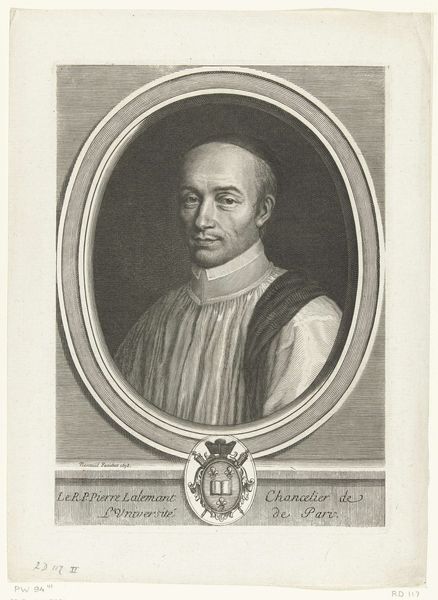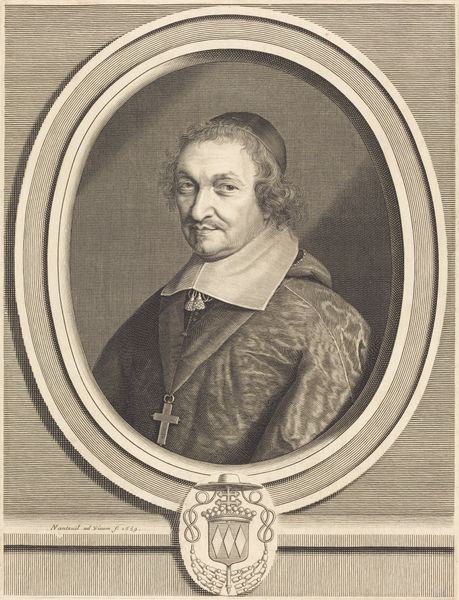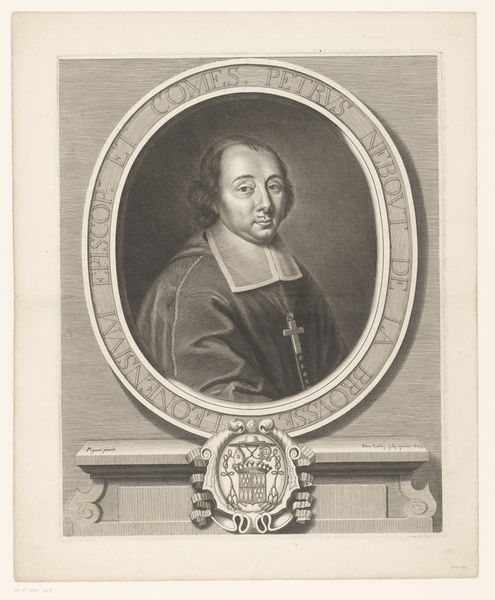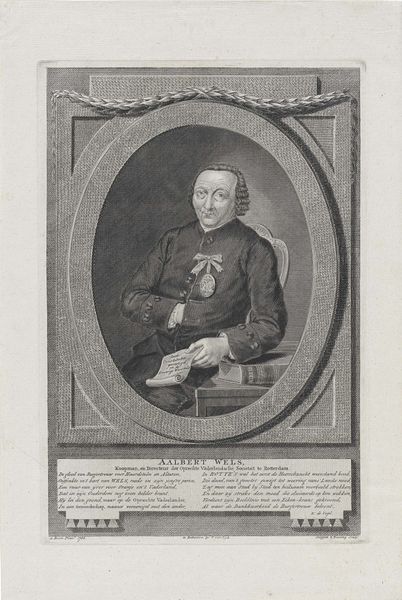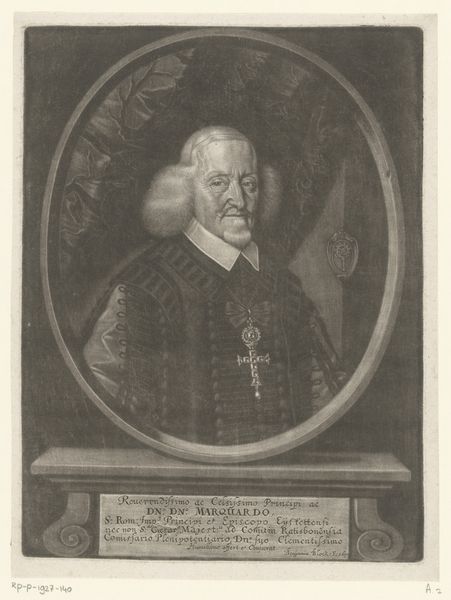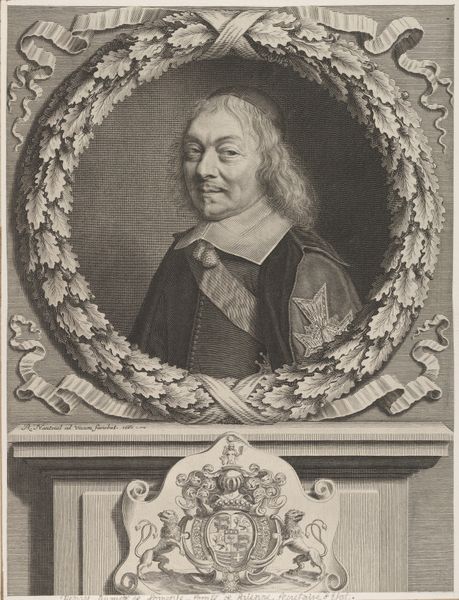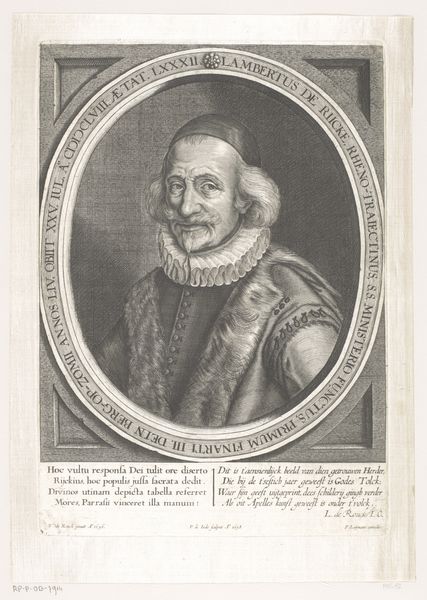
engraving
#
portrait
#
baroque
#
old engraving style
#
academic-art
#
engraving
Dimensions: height 249 mm, width 194 mm
Copyright: Rijks Museum: Open Domain
Editor: Here we have "Portrait of Pierre de Marca," made sometime between 1666 and 1707 by Gérard Edelinck, and it's an engraving. It strikes me as incredibly detailed; I'm fascinated by the process. What specifically can you tell me about the materiality and social context surrounding a work like this? Curator: What strikes me is the meticulous labor involved. Think of the engraver, meticulously carving into the metal plate. It wasn't just about replicating an image, it was about translating textures and status symbols into a language of lines and dots. What kind of labor do you imagine went into producing these kinds of portraits at the time? Editor: I imagine it was a very skilled and time-consuming process. Were engravings like this considered a luxury item, a means of disseminating images to a wider audience? Curator: Precisely. Engravings played a key role in circulating images and ideas in the 17th and 18th centuries. Think of them as an early form of mass media, but each print still required skilled labour. Did that process elevate the status of the engraver or still place them beneath painting? Editor: That’s fascinating. I suppose it’s about considering the status of reproduced work, which probably elevated the form but did not overshadow the "original" painting it depicted. Curator: Exactly! And let's not forget the social context – the portrait immortalizes Pierre de Marca. The materiality here conveys power, both the sitter's and, in a way, the artist's. The artist here captures Marca, a subject invested in material processes like taxation as well as religion. This brings up questions around wealth and patronage and their impact on art making. What does that mean to you? Editor: It makes me wonder about how we value different types of art and labor today, and what we choose to memorialize through artistic practices. Thank you. Curator: And thank you, it’s given me much to reflect on about labor within artistic process itself.
Comments
No comments
Be the first to comment and join the conversation on the ultimate creative platform.
